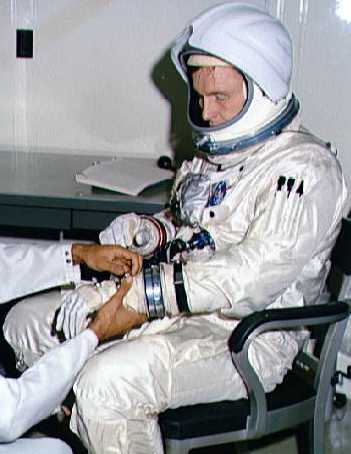
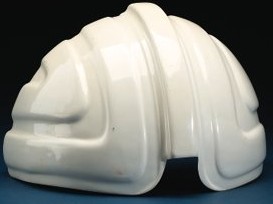
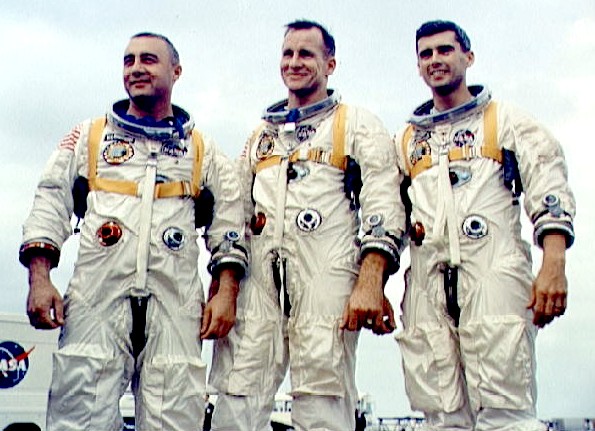
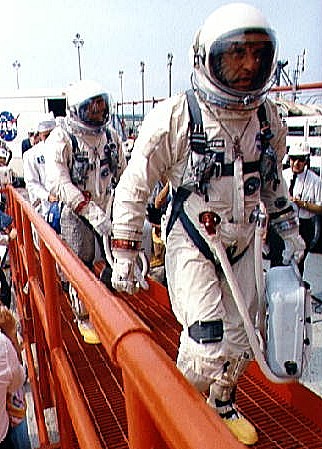
Left – Ed White wearing the A1C suit for Apollo 1.
Essentially a souped-up version of the Gemini suit, this suit would not save the crew from being killed in the Apollo fire. Compare to photo of Gemini suit at right.
2nd from left – Unique plastic visor assembly used on the A1C suit.
2nd from right – Gus Grissom, Ed White, and Roger Chaffee.
Right – A Gemini crew walks up to the pad in suits almost identical to the A1C Apollo suit.
Apollo A6L
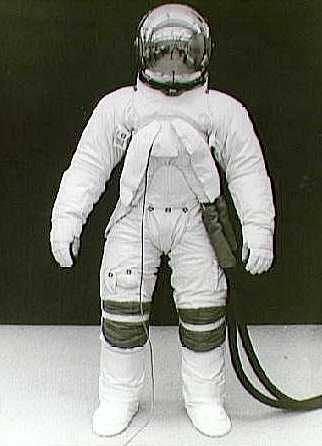
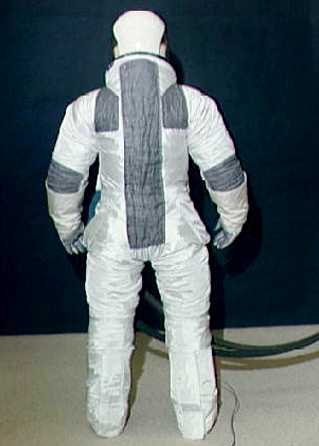
Late development model of the Apollo PGA/EMU, called the A6L. This suit was developed in response to the Apollo 1 fire. The outer layer is made of Beta cloth, a new fire resistant glass coated material.
Note that the bubble helmet in the left photo is mirrored, like a lawn ornament. Also note the sleeve covering the umbilical hoses that’s attached to the chest of the suit. This item was later changed for the A7L suit and then never used in flight. The suit retained the velcro tabs and snaps that would have held it in place on the flight ready suits. You can clearly see them in this picture.
Also note the bands of dark gray Chromel R on the knees, elbows, shoulders, and back. Only one small piece of this material was used on the flight suits at the center of the back. It was also used on the lunar over boots and gloves.
Apollo EMU Evolution
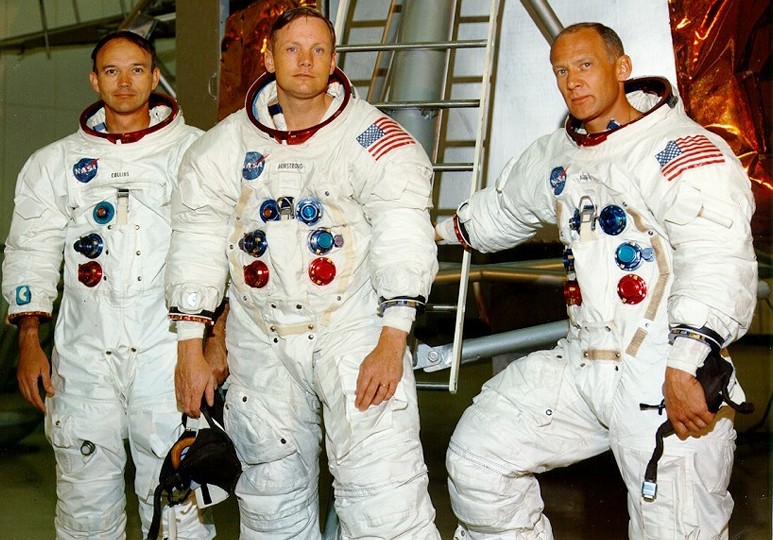
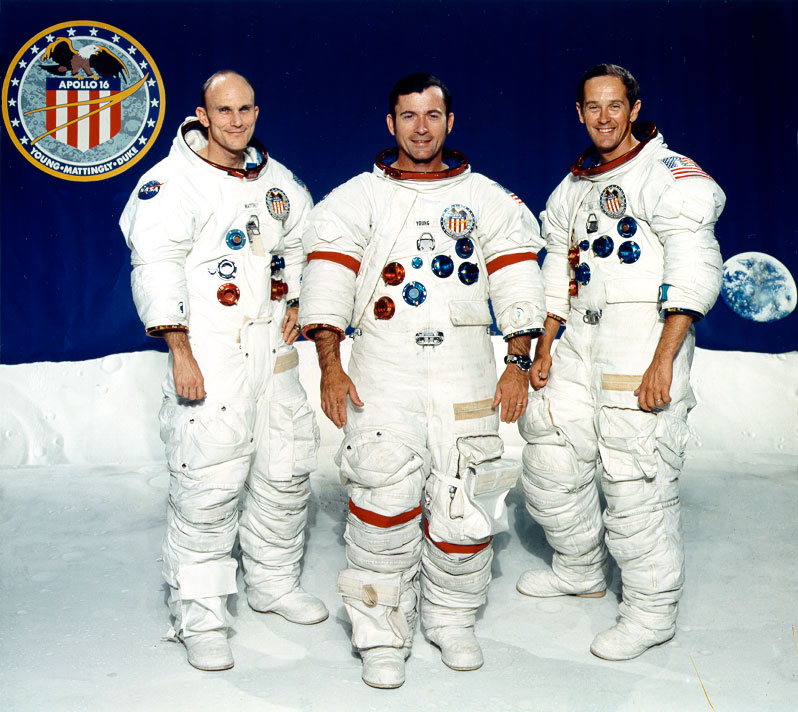
The final version of the Apollo EMU underwent 2 steps in evolution. At left, the A7L worn on most of the manned missions, from Apollo 7 through Apollo 14. At right, the A7LB used in the J Series missions of Apollos 15, 16, and 17. It was also the suit used on Skylab and ASTP. Note that the Commander’s and Lunar Module Pilot’s (CDR and LMP) suits were identical, while the Command Module Pilot’s (CMP) suit was unique. This had to do with the fact that the CMP’s suit did not employ the Liquid Cooling Garment (LCG) used during EVA on the lunar surface.
Externally, the major differences between the two versions were:
a. Entry zipper moved from back of suit to front diagonally from the right hip over the right abdomen and up the right front of the suit
b. Umbilical connectors relocated
c. Removal of flap over groin area
d. Addition of red stripes on arms and legs of CDR’s suit after Apollo 12
Internally, a waist joint was added to allow crewmen to bend at the waist which was essential for sitting in the rover
Miscellaneous Apollo Garments
~ Inflight ~
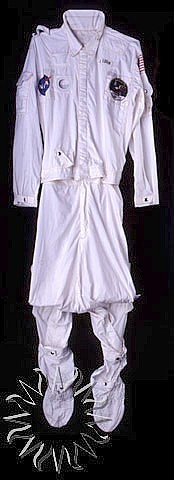
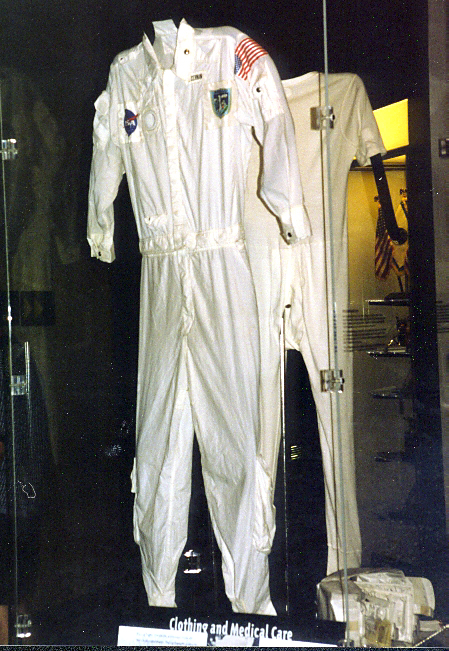
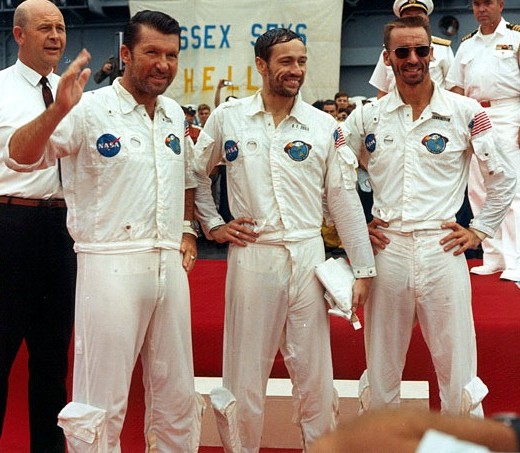
Left – Constant wear garment (CWG) long johns worn inflight
Center left & right – Inflight coveralls. These were coated with Teflon to provide fire protection. The hole in the right chest area was for the electrical connector for the biological telemetry harness to pass through.
Right – Apollo 7 crew post recovery in coveralls. Note that Wally has his sleeves rolled up.
~ Post Flight ~
Biological Isolation Garment “BIG”
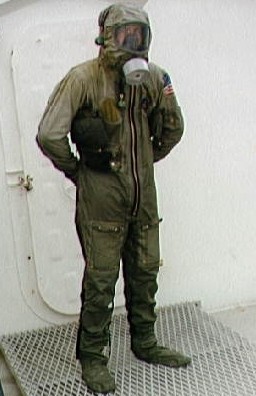
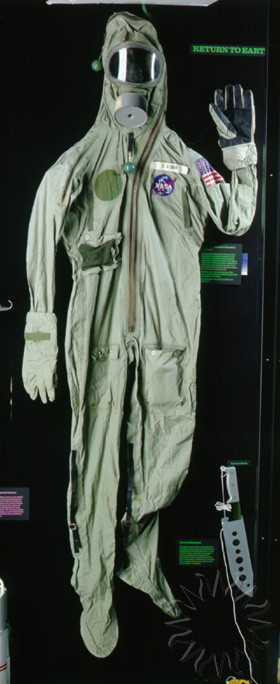
In an effort to curtail the possibility that lunar organisms (germs) might infect the earth, the first 3 crews to bring back lunar material, Apollos 11, 12, and 14, were placed into “isolation” for 3 weeks after their missions. These suits were worn by the crews of Apollos 11 & 12 from the time of opening the CM hatch until they were in the quarantine trailer (MQF) aboard the recovery vessel. The Apollo 14 crew wore only the masks.
The BIGs were essentially full body flight suits made of a “closed knit” material, and a gas mask to filter their exhalations.
Many have looked on the steps that were taken to prevent contamination of the earth as foolish. However, had this occurred, the results could have been truly catastrophic (end of mankind kind of thing).
